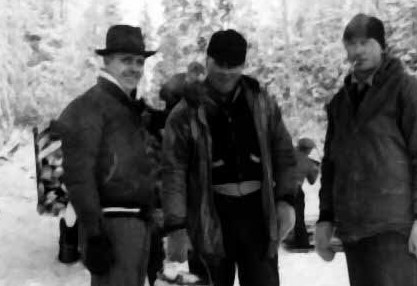Every so often when I write about local histories, I like to focus on the people who helped to make a community, rather than organizations or events. This time, I am focusing on George W. Evans, who arrived in Flin Flon in 1929 to take a position at the local lumber dealer. He had previously been a school teacher in Saskatchewan but was eager for a new place to call home.
In November of that year, he was hired as the manager of Transport Limited, the first dray business in Flin Flon, where he shared duties with Jack Johnson who had been with the company since the previous year. The business began to prosper. It moved into the town site in the winter and expanded with an office and warehouse in 1932.
Evans stuck with the company as a manager until 1936 when he established George W. Evans and Company, a business that represented local industrial and manufacturing firms as a commission broker. He would also take over the local Imperial Oil agency, which had been operated by Transport Limited, and would remain as the agent for the company in the area until his retirement in 1967.
Evans was heavily involved in the community, especially when it came to schooling. He was a member of the Flin Flon school board and was involved in public service as early as 1930. He served as chair of the school board for a total of seven years.
It was thanks to him that the first eight-room school house was built in Flin Flon. He instituted the successful negotiations with the Manitoba and Dominion governments. His negotiation resulted in the government contributing the cost of labour and the building was constructed under the guidance of the Hudson Bay Mining and Smelting Company.
With Evans, the school board introduced public taxation as a method of meeting the costs of education in the district, which did away with the use of payroll deductions - something many were not in favour of.
In addition to his work with the school board, he was active in various associations that helped build highways into the community. He was a member of the Board of Trade dating back to 1932. From 1935 to 1936, he was the president of the organization.
In 1936, he ran for public office and was elected mayor in 1937 and 1938, for a total of two terms. After his last term, he decided to devote himself to his work. His time as mayor was remembered as a quiet time for the community.
In 1939, he became the head of the Flin Flon Highway Association. His work with highway projects helped to get a cross-town road between the airport and Channing, extension of the road to Denare Beach and a highway that led into central Saskatchewan.
In 1942, he became the chairman of the Social Welfare Commission for the area. He was active in helping seniors and bringing air service to the community.
He would marry a woman named Mabel, who was apparently one of the first women to register for volunteer war service during the Second World War. They would have three children.
Have a question or idea? E-mail Craig at [email protected]. Find hundreds of history articles on my website at http://canadaehx.blogspot.ca Listen to Craig’s podcast on all podcast platforms by searching for Canadian History Ehx.
Information for this piece comes from Flin Flon.




